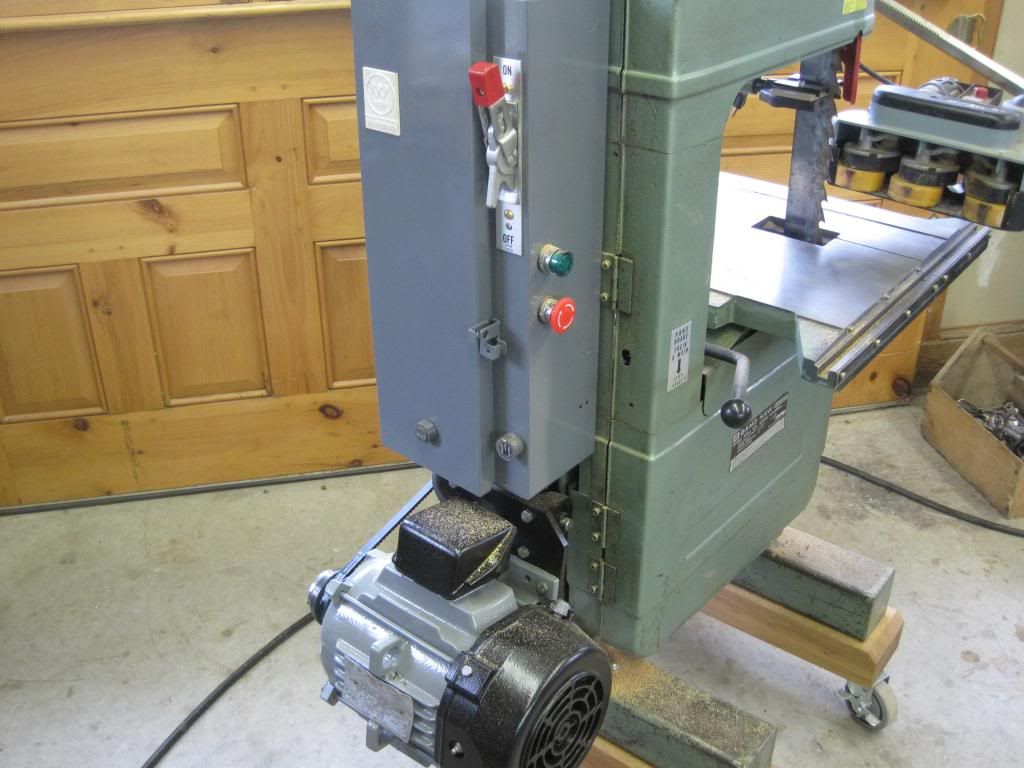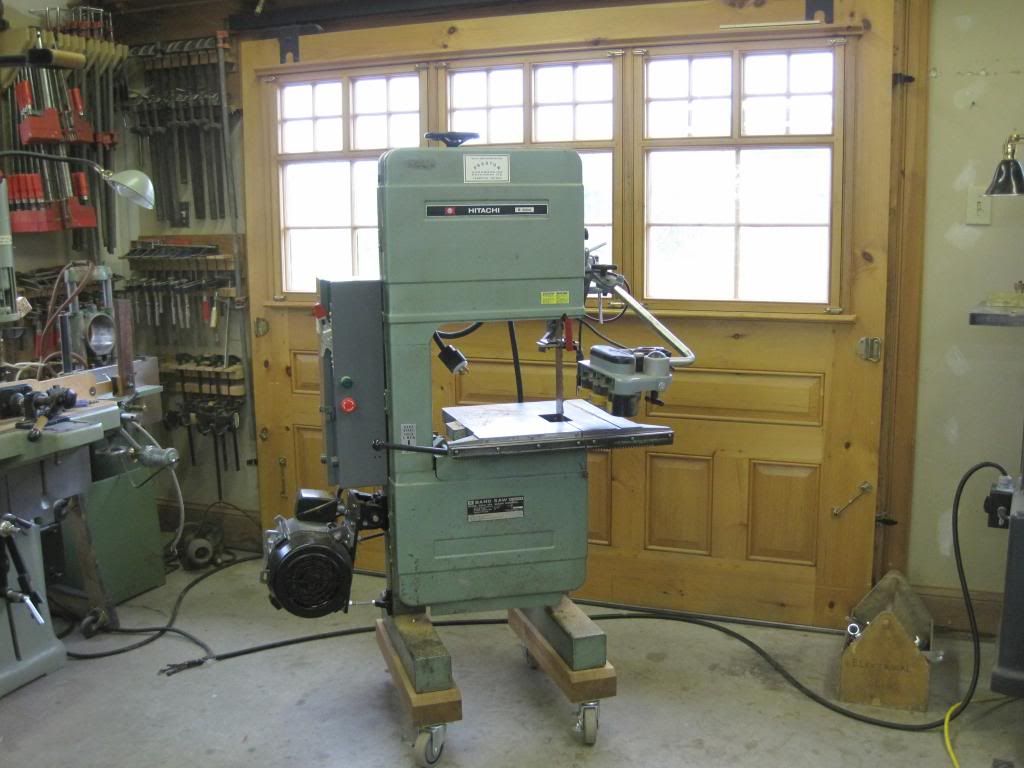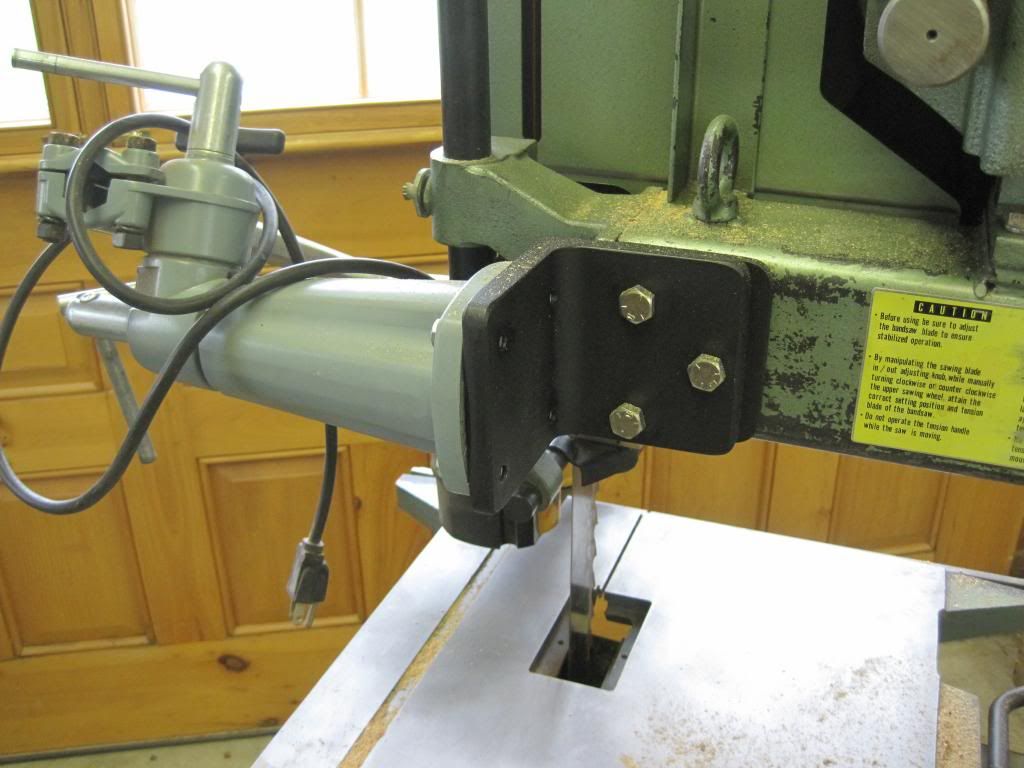richard newman
Titanium
- Joined
- Jul 28, 2006
- Location
- rochester, ny
I'm going to build a power feed for re-sawing laminations for banjo rims, using a 20" Powermatic or 36" Tannewitz saw. It will be sized and for just this use, and then I will apply what I learn to a larger gizmo for sawing guitar backs and sides from some very rare and valuable stock I've collected over the years (my retirement strategy).
The lams are 4' long, 3" wide and range from 1/16" to 7/16" thick. Maple, cherry, walnut and mahogany usually, plain or highly figured. I start with 4/4 to 12/4 rough lumber, saw it to 4' x 3" blanks. Then clean up the faces by running them thru the planer without jointing to maximize thickness, the lams can have some twist or bend, they will be steam bent and "disciplined" later.
After sawing they go thru the planer or widebelt to final thickness and clean up saw marks. One side of the lams is a glue joint, other gets turned afterwards. I prepare a couple of hundred at a time.
Since the blanks are not straight, I'm thinking of using a 3" high roller fence, maybe 6"-8" long. Feed will be a single rubber roller, 3"h x 4" diam. on a swing arm or linear track, with pressure applied by an air cylinder. Pressure will be critical to keep twisted stock on the fence. Powered by a 1/4hp dc motor with a speed control, probably chain driven, haven't worked this out yet at all.
I'd like to get accuracy to .005", and maybe get a surface suitable for glue joints using carbide blades. Or at least just require a dusting thru the widebelt. I've considered building in some blade guides directly above and below the cut for maximum blade stabilization.
I thought I'd just throw this out before I go further to see if anyone has any experience, suggestions, or criticisms. Best kind of feed rollers? Anyone know about dc moters and controls?
The lams are 4' long, 3" wide and range from 1/16" to 7/16" thick. Maple, cherry, walnut and mahogany usually, plain or highly figured. I start with 4/4 to 12/4 rough lumber, saw it to 4' x 3" blanks. Then clean up the faces by running them thru the planer without jointing to maximize thickness, the lams can have some twist or bend, they will be steam bent and "disciplined" later.
After sawing they go thru the planer or widebelt to final thickness and clean up saw marks. One side of the lams is a glue joint, other gets turned afterwards. I prepare a couple of hundred at a time.
Since the blanks are not straight, I'm thinking of using a 3" high roller fence, maybe 6"-8" long. Feed will be a single rubber roller, 3"h x 4" diam. on a swing arm or linear track, with pressure applied by an air cylinder. Pressure will be critical to keep twisted stock on the fence. Powered by a 1/4hp dc motor with a speed control, probably chain driven, haven't worked this out yet at all.
I'd like to get accuracy to .005", and maybe get a surface suitable for glue joints using carbide blades. Or at least just require a dusting thru the widebelt. I've considered building in some blade guides directly above and below the cut for maximum blade stabilization.
I thought I'd just throw this out before I go further to see if anyone has any experience, suggestions, or criticisms. Best kind of feed rollers? Anyone know about dc moters and controls?





 ) imagined for it.
) imagined for it.

